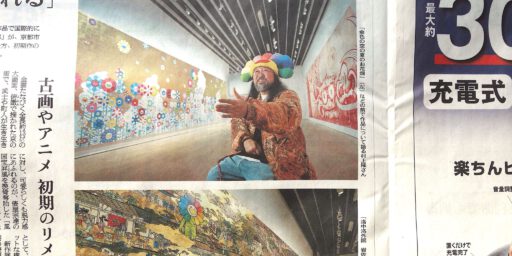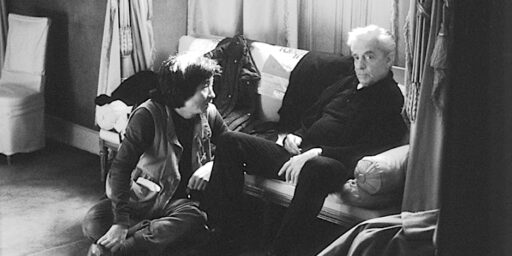純真な好色像・聖母マリア~ファム・ファタール、優秀な棚田康司 @ ミヅマアートギャラリー La Sainte Vierge - Femme Fatale, 'lascivité innocente' by outstanding sculptor TANADA Koji @ MIZUMA ART GALLERY

人間の存在価値をめぐる根源的なテーマに迫る棚田康司 。
私は何十年も、彼のアーティスティク・プラクティスを尊重し、今回の個展も、優美でソフィスティケーション。すべての彫像がvraiment très raffinées et délicieuses. Des femmes japonaises connues.
棚田の非凡な実践は、肉体美を誇示する女性像の内面に潜む、聖母マリアとイノセンス、ファム・ファタールの倒錯的な衝動を見ぬき、それを鋭敏で繊細な彫刻で浮き彫りにしてみせています。
非常に見応えのある個展です。ぜひ9月1日まで!
東京、2018年8月23日
亜 真里男
棚田康司 「全裸と布」@ ミヅマアートギャラリー
TANADA Koji “Unclothed and Clothed” @ Mizuma Art Gallery
2018/8/1 ~ 9/1
11:00-19:00
Closed on Sunday, Monday and National Holidays
162-0843 東京都新宿区市谷田町3-13 神楽ビル2F
Kagura Bldg. 2F, 3-13 Ichigayatamachi, Shinjuku-ku, Tokyo 162-0843
http://mizuma-art.co.jp/exhibitions/1808_tanadakoji/
Press release by the gallery:
棚田がこれまで彫り続けてきた少年少女の像は、成熟と未熟、聖性と俗性、上昇と下降など、その境界線に存在することによって、無限に広がっていく可能性や領域を私たちに提示してきました。
昨年夏に伊丹市立美術館にて開催されたO JUNとの二人展「鬩(せめぐ)」では、彫刻家、画家という異なるアプローチで、表現という大きな課題に立ち向かいました。
互いの少年像を彫り描き、同一のモデルを題材にした作品制作、空間を共有した公開制作など、展覧会名が示す通りの一騎打ちは、結果的には辟易するほどに自分自身と向き合う機会になったと棚田は振り返ります。
それから1年が経ち、迎える本展で発表される新作は、一見これまでの棚田作品にみられた少年少女像からは離れた、力強く世界を立ち上げる裸婦像です。
重力に抗うようにわずかに上を向いた顎先や、未知に構えるように力が入った足の指先。細部に張り巡らされた緊張感と、母性のような慈しみや温もりが、微妙な均衡を保ちながら確かにそこに存在しています。
木塊という制約から放たれ、棚田の手によって逞しく立ち現れた女性像もまた、境界線に存在し世界を繋いでいくのです。
衣服を一枚ずつはがすように、木との対話を丁寧に重ねながら彫り出して行く作業は、より深く人間像を探っていく行為とも言えるのかもしれません。
自分とは何か、表現とは、彫刻とは何かーー更なる深化を遂げる棚田康司が表出させた木の生命を、この機会にぜひご高覧ください。
Tanada’s sculptural practice to date has continuously centred upon statues of young boys and girls who exist on the boundary lines between maturity and immaturity, the sacred and the earthly, the ascendant and descendent, traversing domains and revealing to us a seemingly infinite range of possibilities.
In his two-person exhibition with O JUN entitled “Semegu”, held at the Itami City Museum of Art in summer 2017, the artists approached the vast notion of “expression” through the contrastive approaches of sculptor and painter.
Each carved and painted, respectively, a depiction of the other as a child. They also shared a common model as the subject for their works, and held a public artwork creation session sharing the same space. Through all these approaches the sense of “one-to-one combat” between the artists, suggested by the exhibition’s title (the Japanese word semegu means a quarrel between two individuals), resulted in what Tanada later described as an almost disconcerting opportunity for the artist to directly confront himself.
One year on, his new works shown for the first time in this exhibition include nude female sculptures which seem to summon up a powerful visual world within Tanada’s practice: a departure from the depictions of boys and girls that have featured in his work to this point.
From the curve of a jawbone, seeming to lift up ever so slightly in resistance to gravity, down to the tips of feet that seem braced for the unknown: the details of Tanada’s works seem to bear a particular tension. The contrast between this tension and his figures’ maternal sense of warmth and affection preserves the delicate equilibrium within which his works exist.
These powerful female statues, freed from the contradictions of the woodblock and wrought into appearance by Tanada’s hand, at once exist on the boundary lines and are the connectors of worlds.
The act of carving away at the tree in a careful process of accumulating dialogue with it, as if gradually disrobing it of layers of clothes, could perhaps also be considered a searching for a more profound form of humanity.
What is the self? What is expression, or sculpture? We invite you to witness the lives of these trees, of which Tanada has accomplished the expression of greater depth than ever.
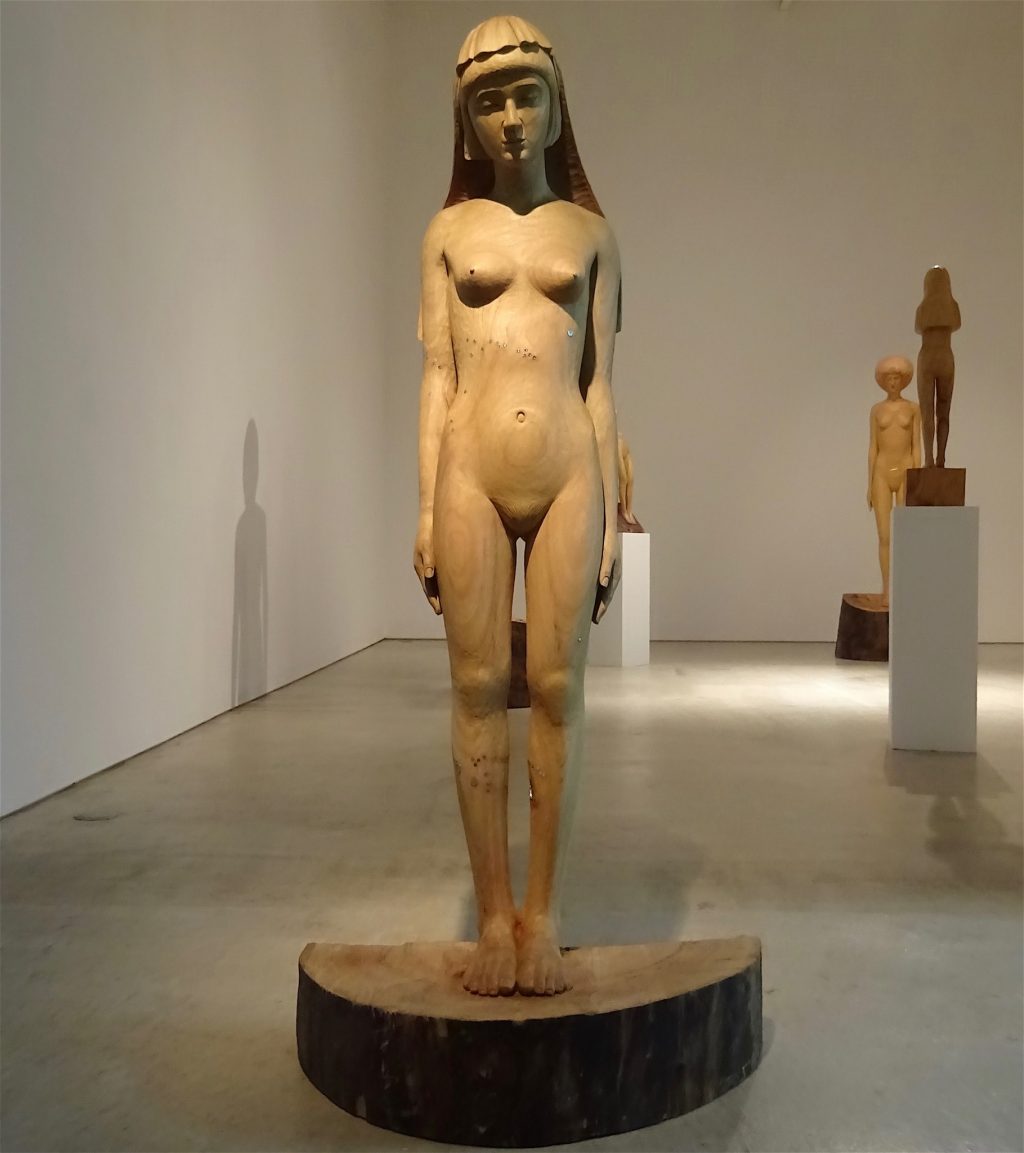
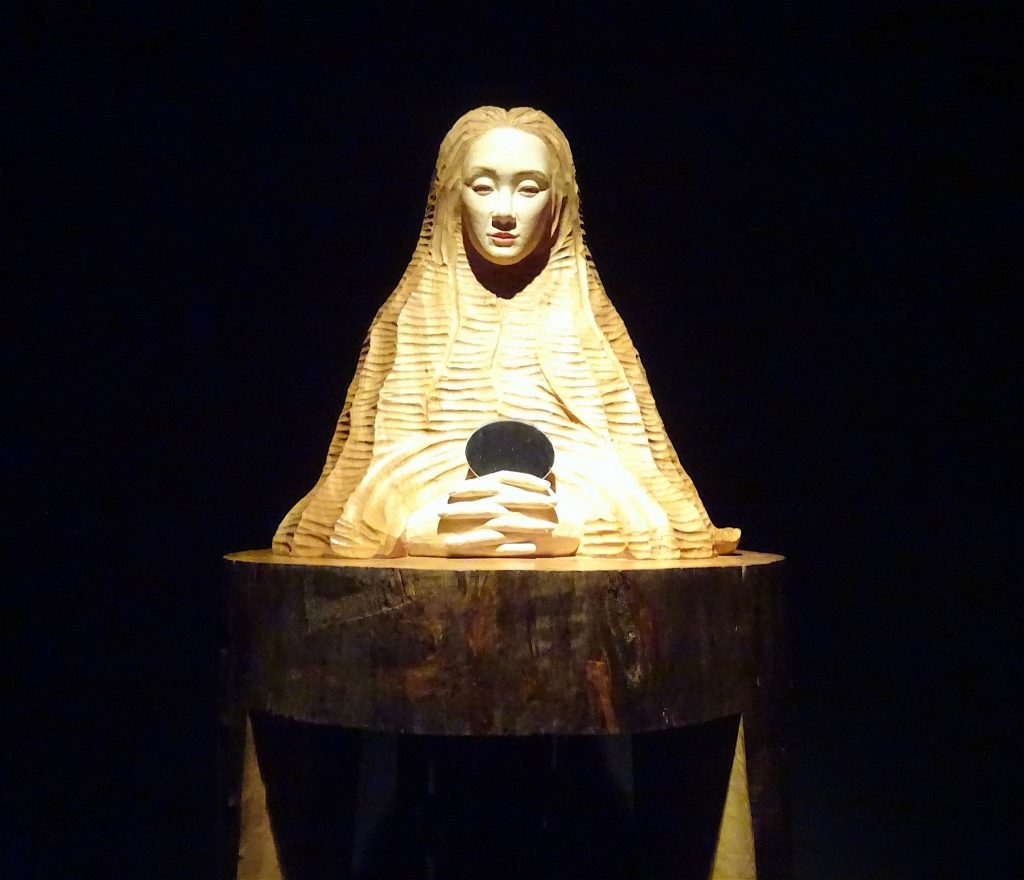
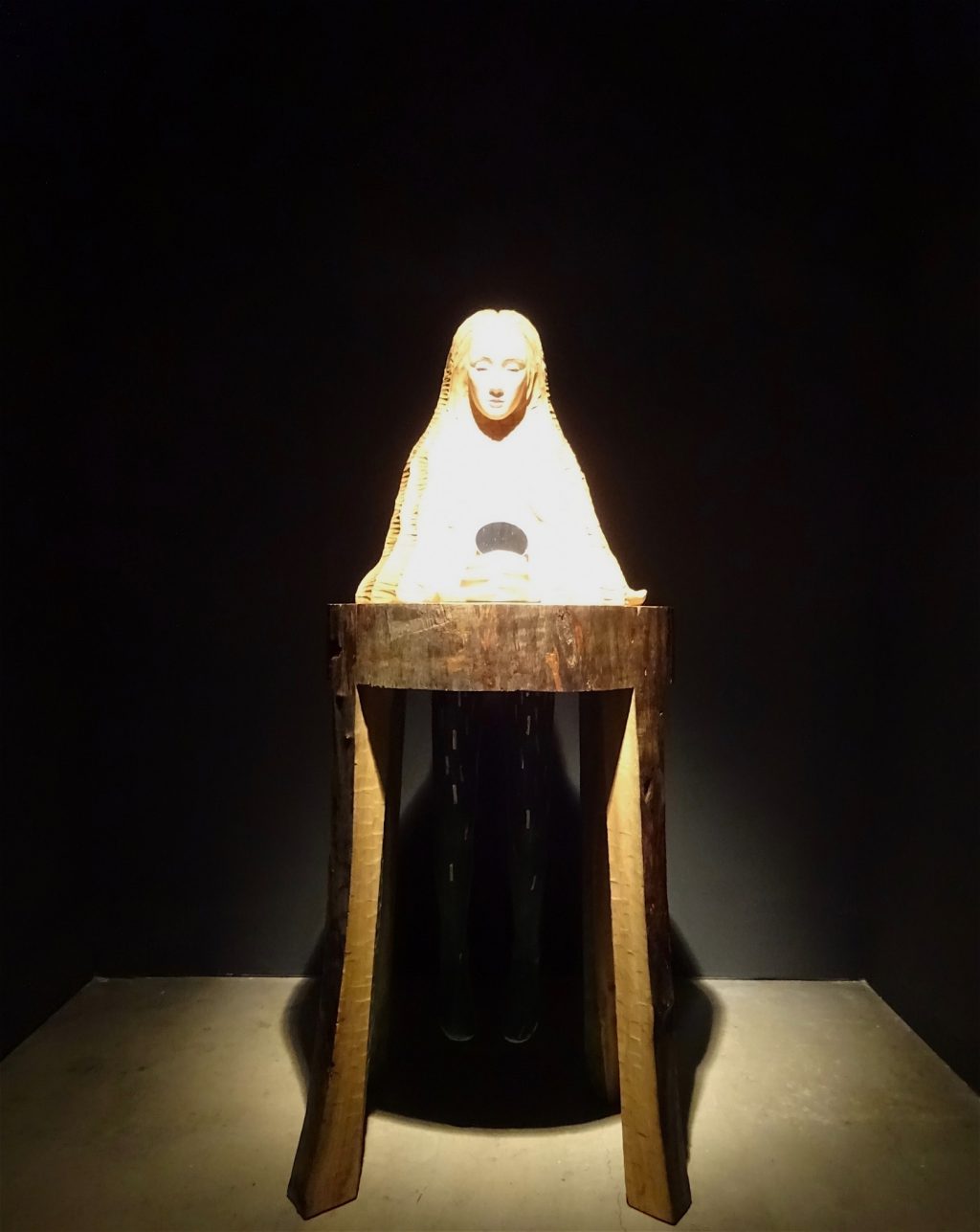
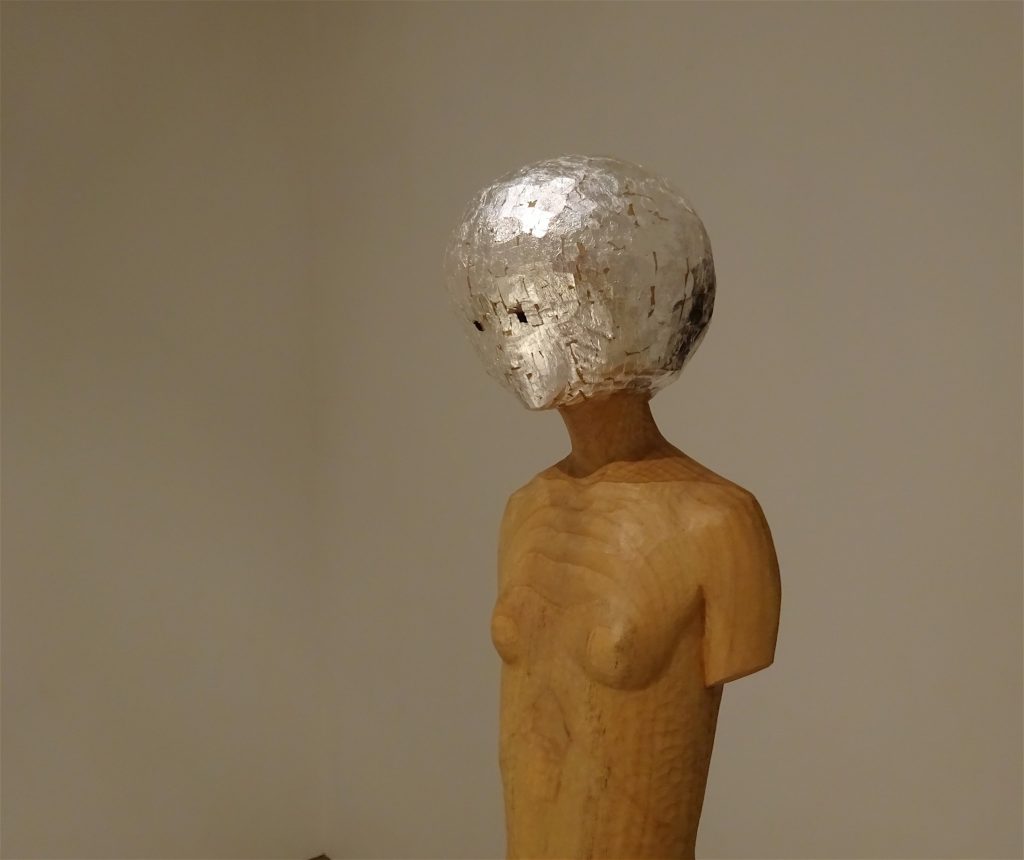
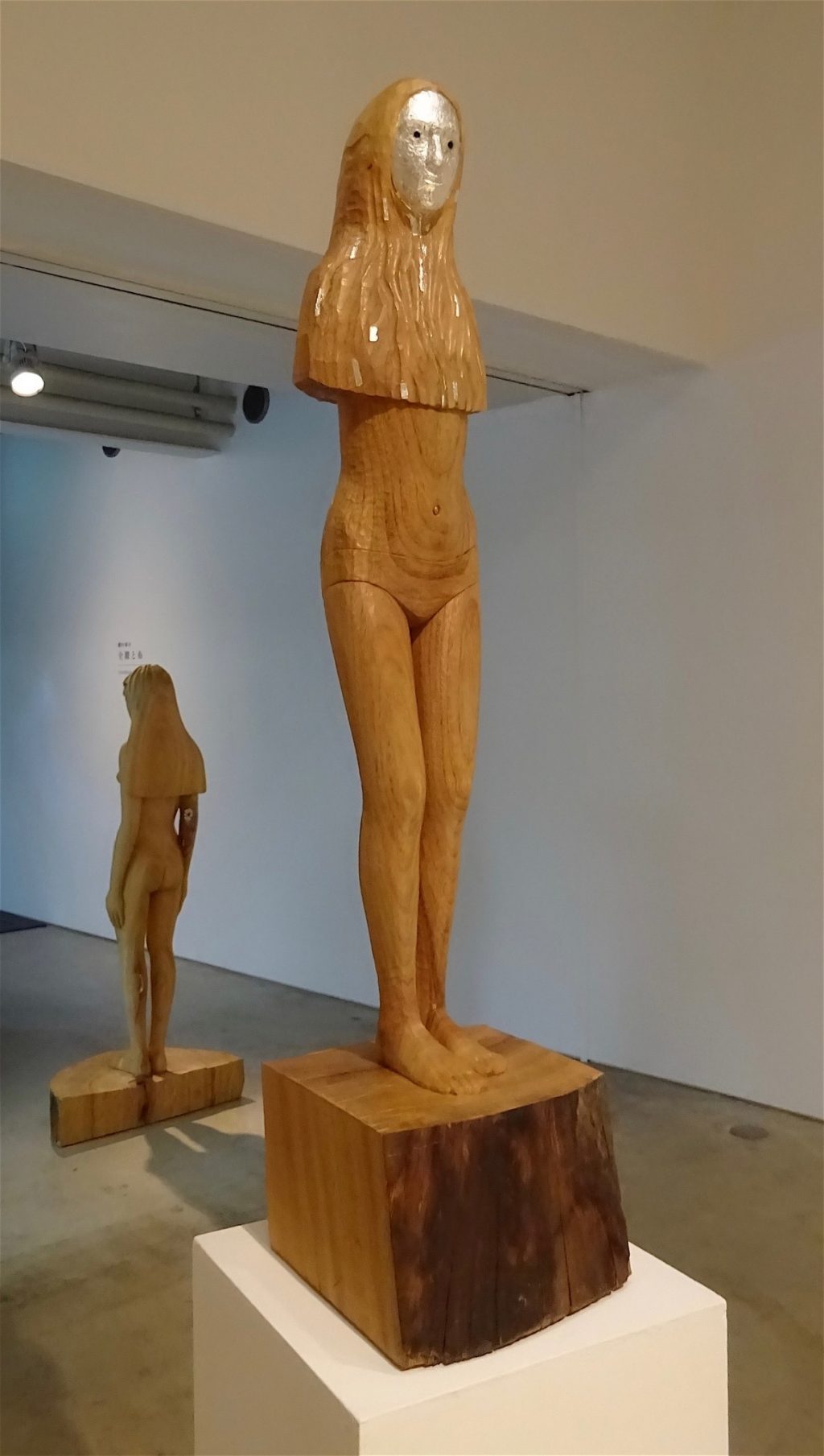



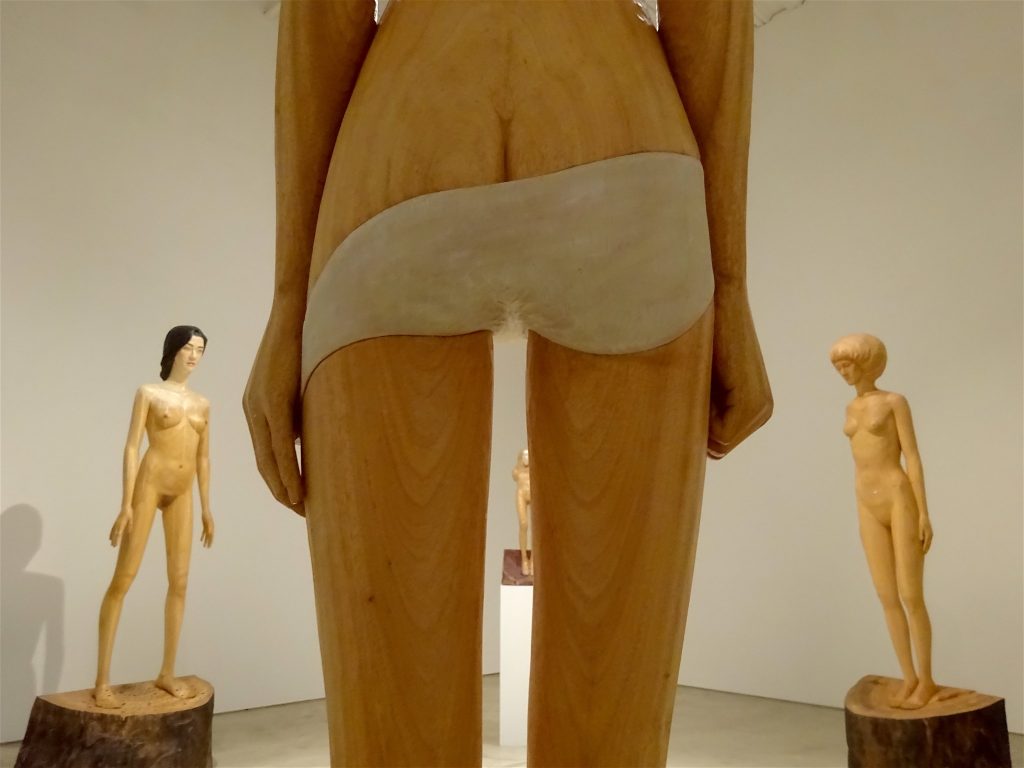
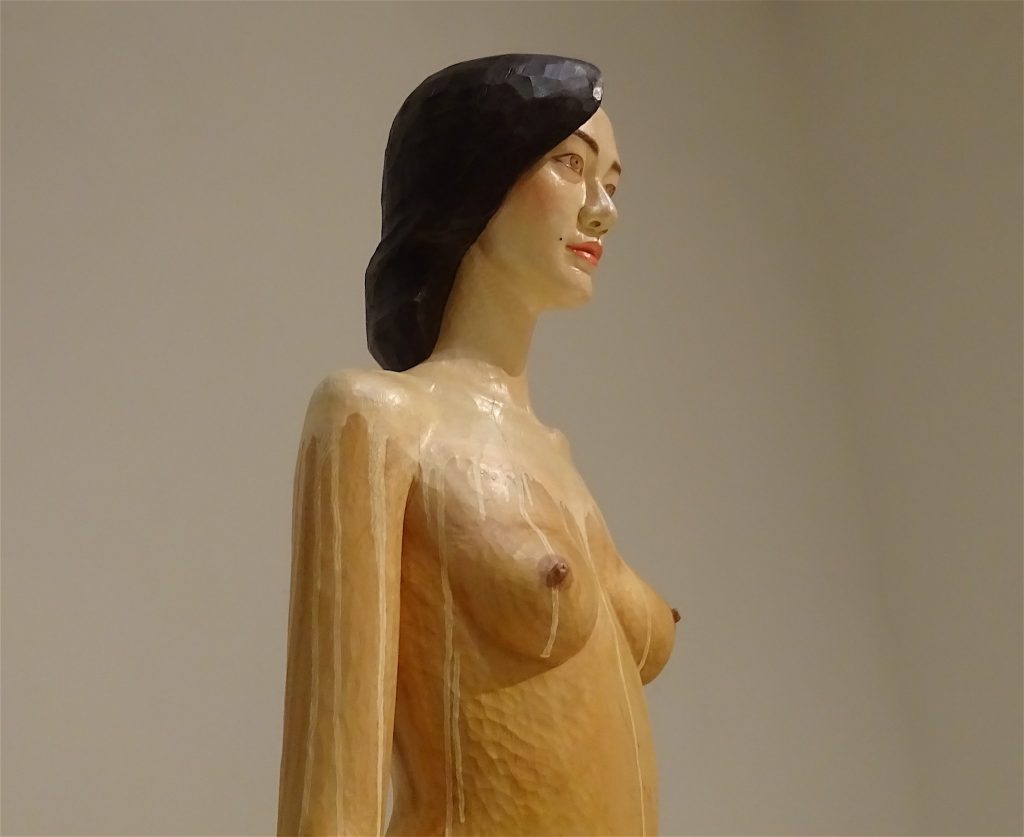
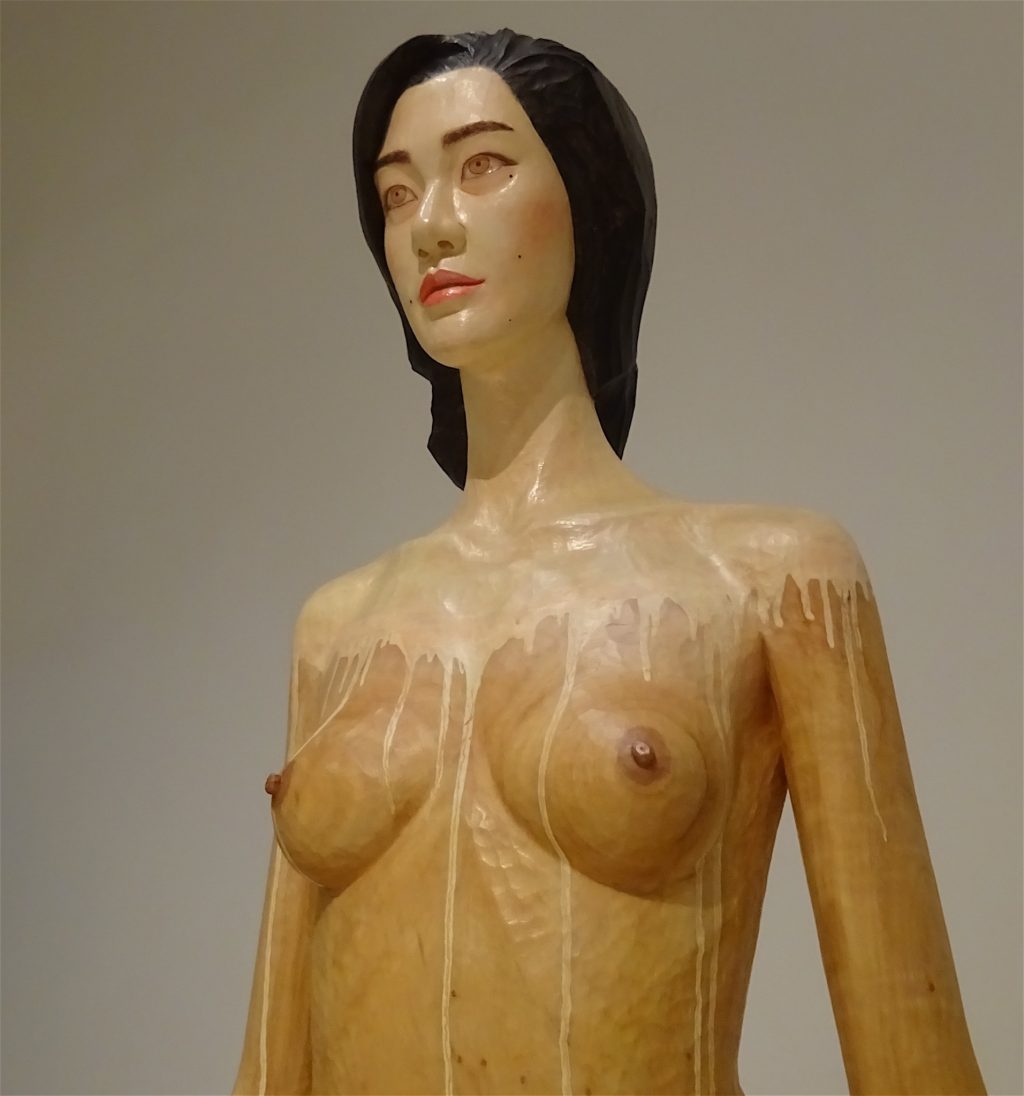
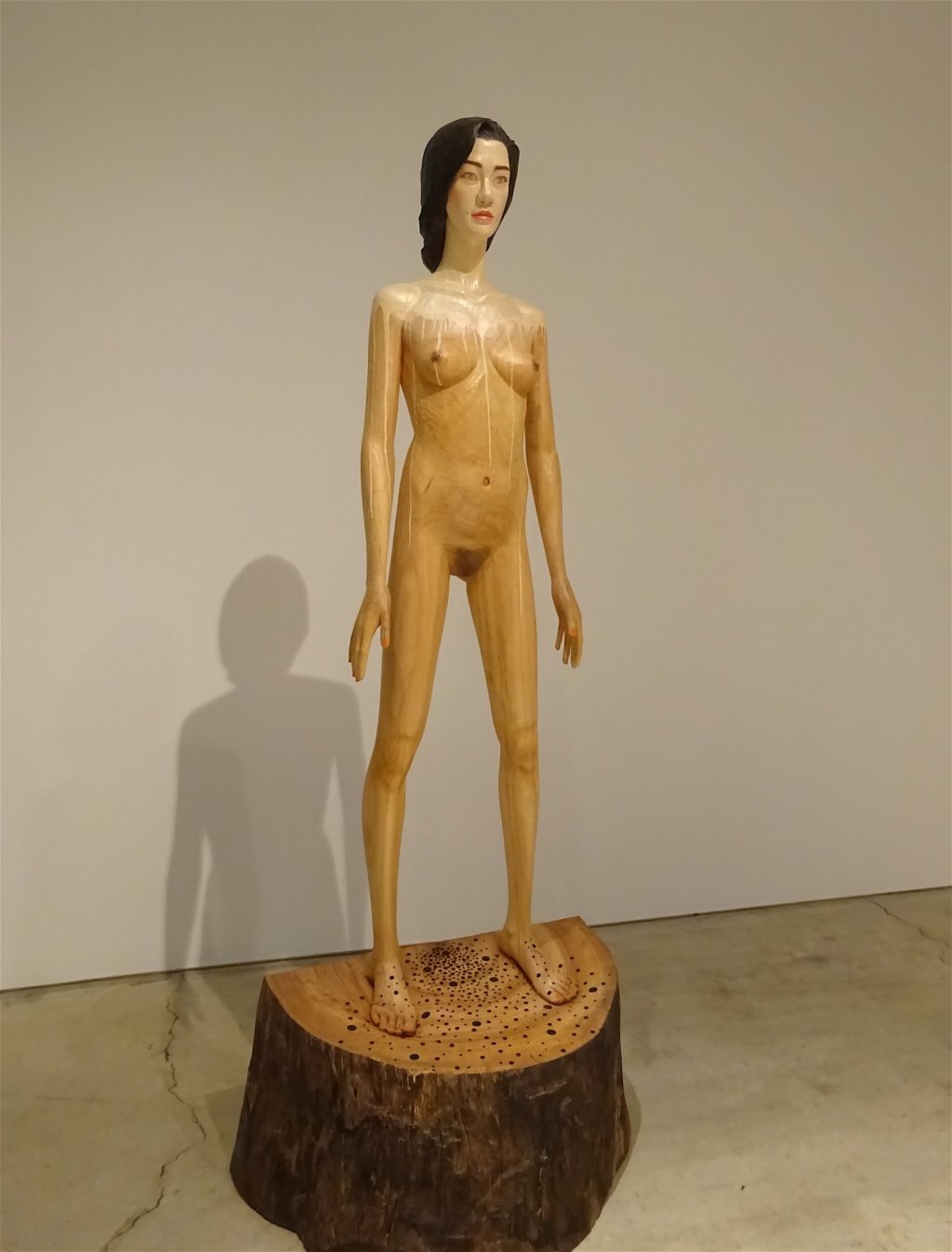

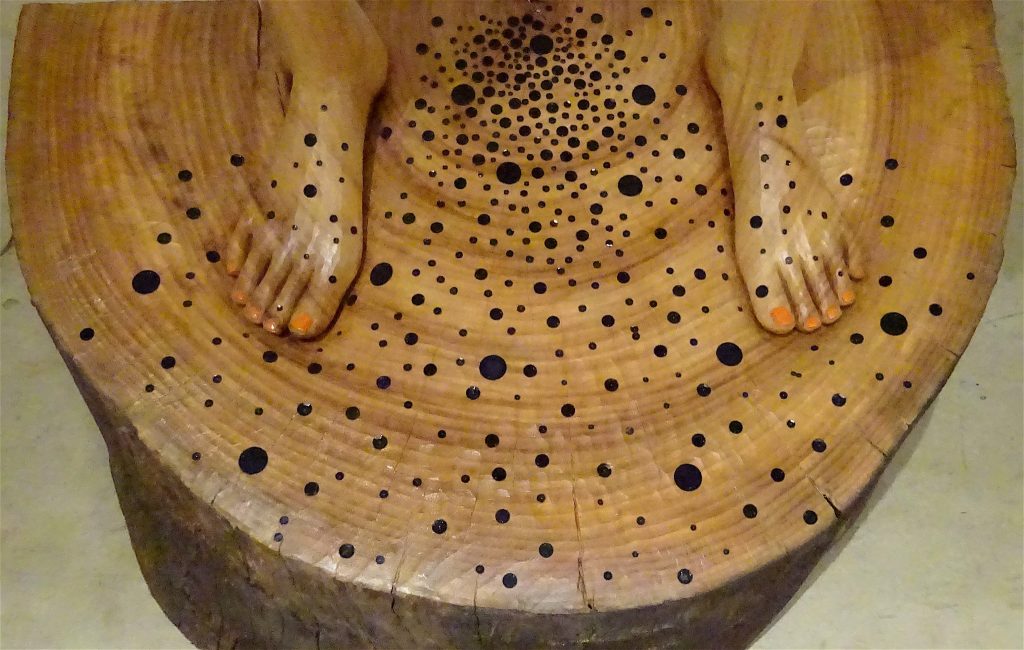
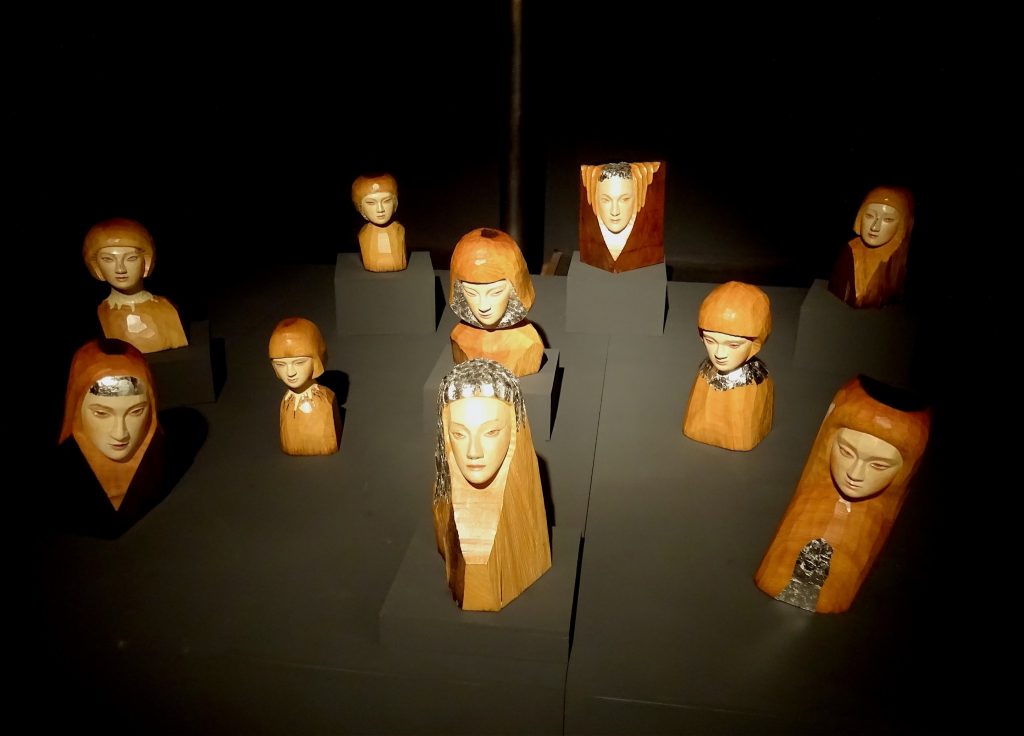
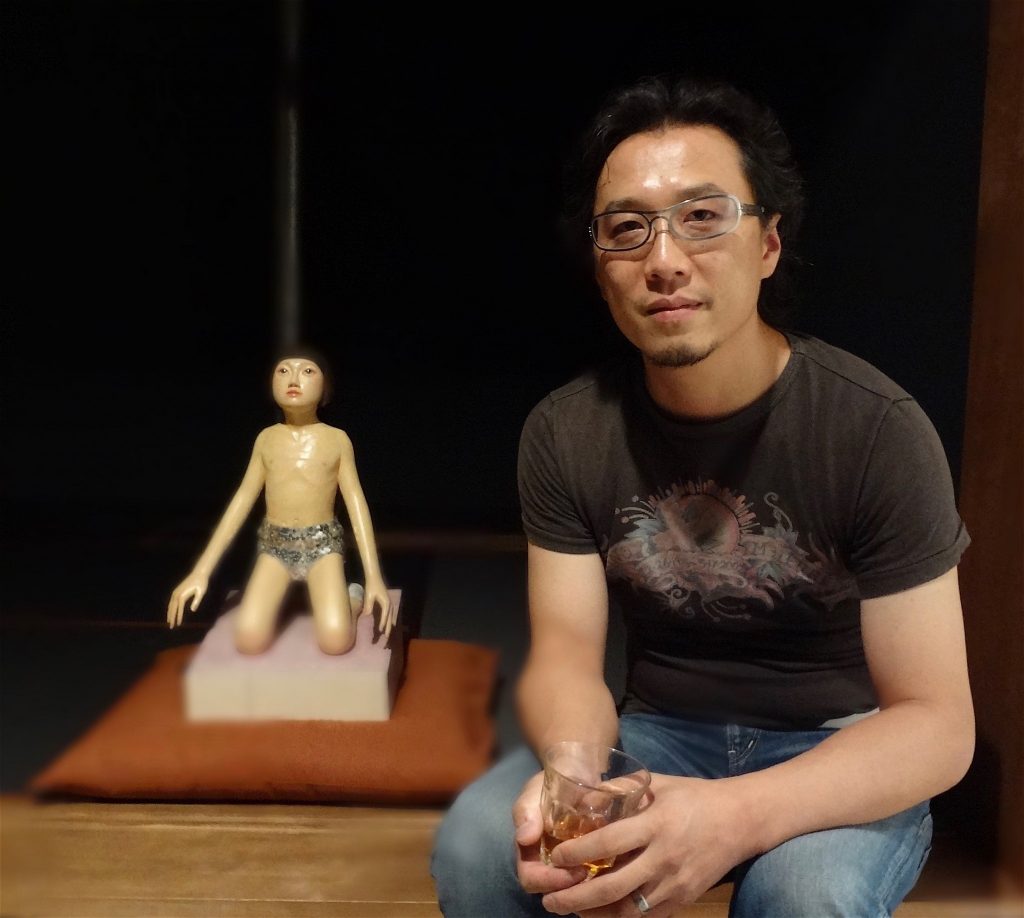
archival link:
Communion with the spirits of wood
By C. B. LIDDELL
Special to The Japan Times, Thursday, Nov. 8, 2012
quote:
A powerful presence in the black room is “springing up boy” (2011), a figure that I couldn’t help perceiving as Christ without a cross. This also highlights the most important influence on Tanada, seven months he spent in Germany in 2001, and the tradition of German woodcarving. In particular, the artist says he was struck by the asexual realism of a statue of Christ by the Late Gothic sculptor Tilman Riemenschneider (c.1460-1531). This is clearly something that has fed through into his highly androgynous figures with their sense of spiritual detachment from the world.
Putting things this way, however, makes Tanada sound too derivative. Of course, this is a danger for any artist who is strongly moved by artistic influences from a culture or tradition outside his own; but in the case of Tanada this is not the case. Rather than the showy German piety of Riemenschneider, Tanada’s works are infused with Japanese animism and sensitivity to nature.
This is not always obvious. Some of the figures unwittingly evoke the wimpier examples of Japan’s soshoku-danshi (herbivore men). But closer examination reveals the artist’s close communion with the wood. Rather than expiring messiahs or androgynous geeks, Tanada’s figures are delicate dryads and sylvan sprites — in other words, the spirits of the wood given human form.
Koji Tanada “Rise” at Nerima Art Museum runs till Nov. 25. 10 a.m. — 6 p.m. ¥500. Closed Mon. http://www.city.nerima.tokyo.jp/manabu/bunka/museum/tenrankai/tanada2012.html
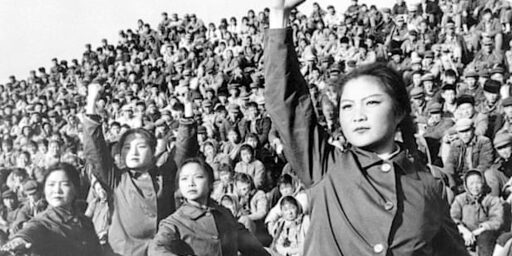
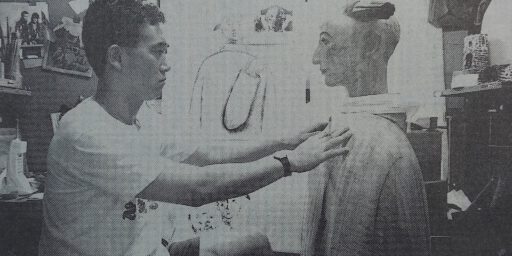
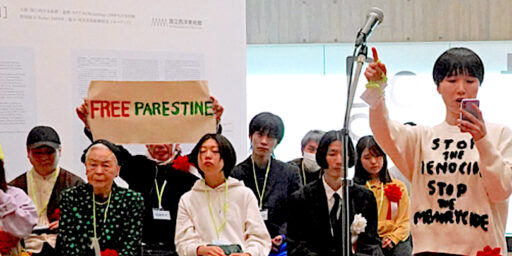
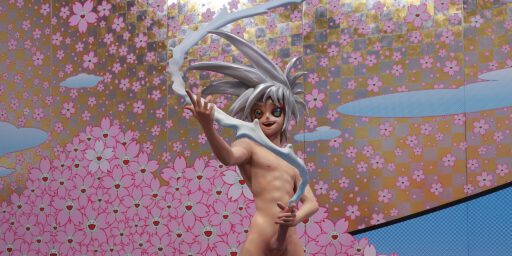
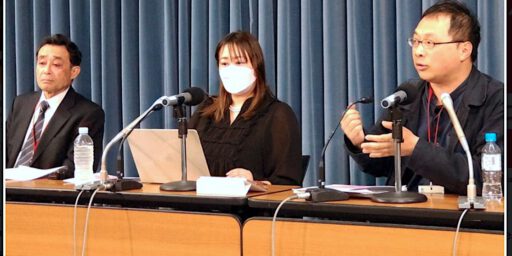

と-1963年生まれ、カルチュア・エンタテインメントの中西一雄社長-2024年の写真-512x256.jpg)
